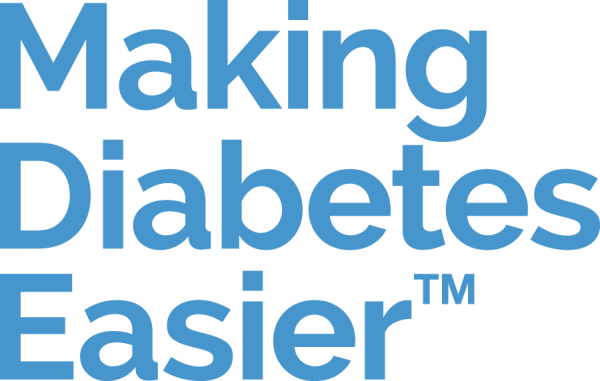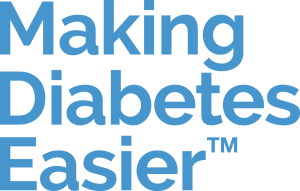How to get tested for diabetes?

How to get tested for diabetes?
Read on to find out what a diabetes test consists of, and the criteria on which a positive diagnosis of diabetes is based.
Testing for type 1 and type 2 diabetes
Finding out if you have diabetes involves a health professional taking a blood sample to measure your blood glucose (sugar) levels. This blood test can be carried out at a medical laboratory:
- After at least 8 hours of fasting;
- At any time of the day;
- After drinking a sweet drink (75 g of glucose diluted in water) following a fasting period of at least 8 hours (without eating, drinking alcohol or smoking); this test, called the oral glucose tolerance test (OGTT), must be supervised by a laboratory [1,2,3,4,5].
According to the latest guidelines of the World Health Organization (WHO) and the International Diabetes Federation (IDF), you can be diagnosed with diabetes if your blood test results show that:
- Your blood glucose level is 126 mg/dL (7.0 mmol/L) or higher, when the blood test was carried out on an empty stomach;
- Your blood glucose level is 200 mg/dL (11.1 mmol/L) or more, when the blood test was done at any time of the day;
- Your blood glucose level is 200 mg/dL (11.1 mmol/L) or higher two hours after the OGTT;
- Your HbA1c (glycated haemoglobin) is equal to or greater than 6.5% (48 mmol/mol), irrespective of whether the blood test was done on an empty stomach. It should be noted that in some cases (e.g. pregnancy, iron deficiency, or spleen, liver or kidney disease), HbA1c readings may be erroneous [1,2,3,4,5].
Results should be confirmed by doing one or several further blood tests within 14 days of the first one [1,2,3]. If a positive diagnosis is confirmed, other indicators can then be taken into account and analysed to determine whether it is type 1 or type 2 diabetes:
- Age;
- Body mass index (BMI);
- Symptoms;
- The presence of autoantibodies directed against the insulin-producing cells of the pancreas (the islet of Langerhans beta cells) in the blood [1,4,5].
Testing for pre-diabetes
Testing for pre-diabetes (when there is a high risk of developing type 2 diabetes) can also be done by taking one or more blood tests [1,3,5].
According to the WHO and most diabetes organisations, your blood test results show a positive diagnosis of pre-diabetes when:
- Your fasting blood glucose level is below 126 mg/dL (7.0 mmol/L), AND your blood glucose is between 140 and 200 mg/dL (7.8-11.1 mmol/L) two hours after the OGTT;
- Your fasting blood glucose is between 110 and 125 mg/dL (6.1-6.9 mmol/L) [5].
It should be noted that the screening criteria are slightly different for the American Diabetes Association (ADA) which recommends diagnosing pre-diabetes with HbA1c values between 5.7 and 6.4 % (39-47 mmol/mol) and/or fasting blood glucose level between 100 and 125 mg/dL (5.6-6.9 mmol/L) [1,3].
Screening for gestational diabetes
The WHO and the International Federation of Gynaecology and Obstetrics (FIGO), defines gestational diabetes as being diabetes that develops or is diagnosed for the first time during pregnancy (usually after the 24th week) [2,3,5]. The screening criteria for positive diagnosis of gestational diabetes as defined by WHO are:
- A fasting blood glucose level of 92 mg/dL (5.1 mmol/L) or higher;
- A glucose tolerance test resulting in a blood glucose level of 180 mg/dL (10.0 mmol/L) or higher after one hour, and a blood glucose of 153 mg/dL (8.5 mmol/L) or higher after two hours [2,3,5].
If you have the slightest doubt or any questions, it may be useful to contact your GP.
Sources:
- Karly Pippitt, Marlana Li, Holly E Gurgle. Diabetes Mellitus: Screening and Diagnosis. Am Fam Physician. 2016 Jan 15;93(2):103-9.
- A. Petersmann and al. Definition, Classification and Diagnosis of Diabetes Mellitus. Exp Clin Endocrinol Diabetes 2019; 127 (Suppl 1): S1–S7. doi: 10.1055/a-1018-9078.
- American Diabetes Association. Classification and Diagnosis of Diabetes: Standards of Medical Care in Diabetes-2020. Diabetes Care 2020; 43(Suppl. 1):S14–S31. doi : 10.2337/dc20-S002
- L.A. Dimeglio, C. Evans-Molina, R.A.Oram. Type 1 diabetes. Lancet. 2018 June 16; 391(10138): 2449–2462. doi:10.1016/S0140-6736(18)31320-5.
- IDF. Diabetes Atlas. 9th edition. 2019.

